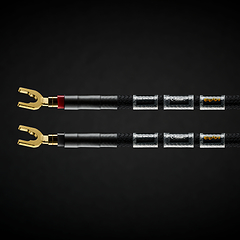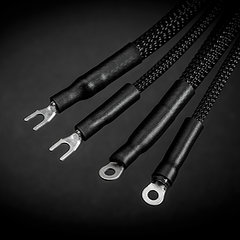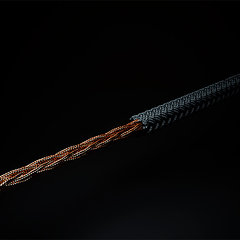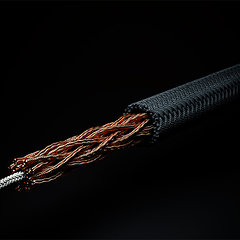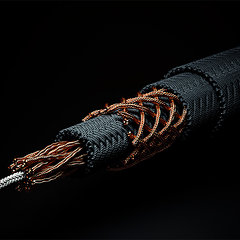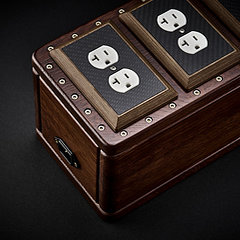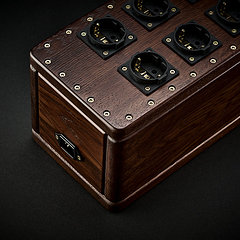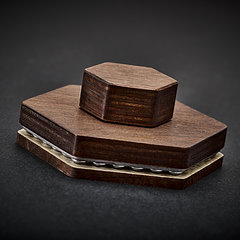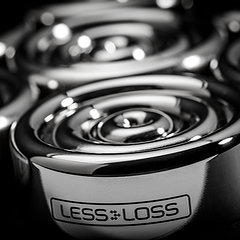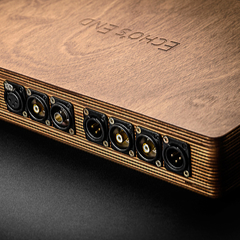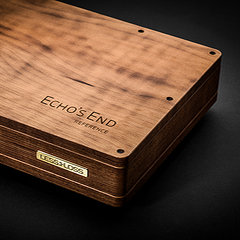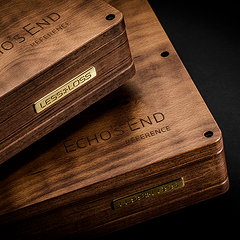 667
667
C-MARC™ RCA InterconnectsC-MARC™ XLR InterconnectsC-MARC™ Speaker CableC-MARC™ Prime Power CableC-MARC™ Classic Power CableC-MARC™ Stellar Power CableC-MARC™ Bulk Wire and CableC-MARC™ Digital CableFirewall ModuleEcho's EndBindbreakerBlackbodyPower distributorBlackGround DIYBlackGround 6x/10x Power BaseBlackGround 8x/10x Speaker Base
DFPC Original (legacy)DFPC Signature (legacy)DFPC Reference (legacy)DFPC Series (legacy) (all)Digital Cable (legacy)Firewall (legacy)Anchorwave (legacy)Homage to Time (legacy)Tunnelbridge (legacy)Laminar Streamer (legacy) All Because of the sheer number of reviews, you can sort them above to quickly find LessLoss products of interest.
C-MARC loudspeaker cable, stereo pairDate Added: 04/28/2017 by Stephen Braude
My new C-MARC speaker cables replace LessLoss Anchorwave cables, in a system filled with LessLoss products: DFPC Reference power cables throughout, Homage to Time ICs, and 6 Firewall modules distributed judiciously. Make no mistake, the AW cables are great, and they replaced (and outperformed) some highly respected Shunyata cables. But with the new C-MARCs, I've had one surprise after another as previously unheard details on familiar recordings caught my attention.
Here's a particularly dramatic example. Probably like most audiophiles, I have certain recordings I use as benchmarks to determine the effects of changes to my setup. When I played one disc I've been using for at least 7 years, I heard for the first time a glitch toward the end of my test track--sounding either like a bad splice or a faint dropout. In order to make sure nothing had happened to my test CD, I bought a 2nd copy, and sure enough, the glitch was there as well. I could hardly believe that I'd never heard this before, in the many hundreds of times I've listened to that track. Now, for the first time, the glitch stood out all too clearly. To me, this illustrates nicely how the new C-MARCs uncover levels of detail which other cables (including first-rate cables) obscure. And of course, when they're not revealing previously unheard defects, the new C-MARC cables simply render more lifelike and solid the sound of instruments and voices. I also hear more ambience from the recording venue, and instruments and vocalists occupy a more discernible location in space (not just left-to-right but also front-to-back). For example, on track 2 ("Once in Love with Amy") from "Mel Torme Swings Schubert Alley" there is some finger snapping and hand clapping which I believe severely tests a system's resolution. With the new C-MARC speaker cables, those sounds were strikingly more lifelike and more clearly positioned in space than they had been before. To say I'm happy about this acquisition would be understatement. I know this is an audio cliche, but I have to say that the new C-MARC cables noticeably took my system to a higher level. C-MARC loudspeaker cable, stereo pairDate Added: 06/23/2017 by Edwin from Germany
Two years ago I compared many loudspeaker cables of the so-called high end and reference level. I set my price limit at 7000.- EUR for 2x4m stereo pair. Then I ordered the LessLoss Homage To Time. The value for money was the best I could find at that moment. But my experience with LessLoss during the last two years was, that new products from Louis Motek, e.g. cables, Firewall Modules or power cables, can bring you to a new level of performance in each case. Therefore it was beyond any doubt for me, to continue this story line by ordering the new C-MARC LS cables. My first experience after burn in with Blue Horizon Proburn: The C-MARC really opened up the soundstage and let you hear more details. The Music sounds un-congested and in my opinion more analogue compared to the already at a high performance level working Homage To Time. I don't regret my purchase. Chapeau!
C-MARC Classic Power Cable; Firewall Module; Bindbreaker; C-MARC XLR balanced signal cable, stereo pair; C-MARC loudspeaker cable, stereo pairDate Added: 08/18/2017 by mdc
Dear Louis,
Even if the full loom of C-MARC cables and the new distributor (and 3 Bindbreakers, under the distributor) have only a mere 30 hours of play, I can already tell you that it is taking music to new heights. I can't comment about a single cable in particular (XLR interconnect, speaker cables, bi-wire jumpers and 3 power cables, new FW-based custom distributor and Bindbreakers) as they were all connected together at the same time. But what I hear right now is astonishing. As much as I have enjoyed the DFPC power cables (Original first, later upgraded to Signature) and the HTT interconnect, etc., the full loom of C-MARC cables and the new distributor (and two previously purchased 5X Firewalls) bring the sound of my cd's to an entirely new level. I will wait for the C-MARC loom to reach the 100 hours mark before posting further impressions, but so far, I have only one word: 'Wow!' ====== (after 100 hours) Things keep on evolving very nicely indeed, Louis. It is almost frustrating to realize that so much information was somehow lost or buried during all these years, including 'the LessLoss years' when it all started with a couple of DFPC Originals. About 100 hours of play and the music sounds extremely rich ('creamy'?), smooth but very detailed, powerful and engaging. Each cd reveals more layers of details and the C-MARC loom keeps all its promises. When I decided to participate in the early bird program, I have to admit that I was skeptical about the principle of purchasing an idea, a concept and not a finished product. I am very happy that I seized that opportunity! You were right: C-MARC is a game changer. ===== (after 400 hours) Although I feel that burn-in isn't completed yet, I wanted to inform you about my most recent impressions of the C-MARC loom after around 400 hours. Everything I mentioned before is confirmed in a splendid way: details, presence, 'kick', powerful bass, extended treble, etc. etc. etc... This is way above the level of my DFPC Signatures and HTT speaker and interconnect cables. When I return to my previous comments about these cables, it could potentially appear that the level of improvement that the C-MARC loom has brought is 'not believable', 'over enthusiastic' or worse, solicited and/or paid for. The extent of the improvement brought by the C-MARC cables is nothing short of dramatic. And as my 'main' components haven't changed over the recent years (Ayon cd player and amplifier, Sonus Faber speakers), I can comfortably 'feel' and hear the upgrade brought by the C-MARC loom. But owning tubes components, I have to say that burn-in is a pain... I wish I owned a second system to which the cables could be connected to for 500 hours. Witnessing the burn-in can be perceived by some as a nice process but not for me. Luckily, my patience was rewarded (and in this case, the upgrade was obvious even early on in the burn-in process). Being familiar with your cables, I am quite sure that the sound will still evolve in the course of the next few weeks. I don't think it is useful to try to go deeper into details; I am not a reviewer and not even an audiophile. But I can say that once again, you came up with a fantastic series of cables that clearly outperforms anything I owned previously, including much-loved LessLoss cables. C-MARC loudspeaker cable, stereo pairDate Added: 01/01/2018 by Jörg Stanislawski
The generous offer with the introduction of the new cable line made me order a new set of speaker cables. I wasn’t sure what to expect, would the difference be big enough to make the purchase reasonable?
When the cables arrived, the first thing that I noticed when I first touched it, was a fabulous feeling, very soft and nice, that is totally different to most other cables with their outside, mostly made of plastic in what form ever. This is the most flexible cable that I ever had in my hands. I can’t think of any problems to place the cable, even in sparse and cramped places. If you use cable lifters/supporters, you may need twice the quantity than usual. I tried to borrow an expensive cable set from a nearby dealer, or to make a comparison directly at the shop. That was not possible, as they didn’t have the time before christmas, nor had they any cables left to lend. So I can only report my own findings. By now the cables have a run time of approximately 140 hours or more. But right from the start the cables clearly outperformed my Zu cables. Actually I had a feeling as if these cables squeeze out the last drop of information from the signal that is running through it. Everything improved to an extensive degree. The imaging of the room information in depth and width now reaches far beyond the sides of the speakers. Instruments and voices got a much better separation, it is as if the imaging of the 3D picture of the sound gotvcompletely newly arranged. Acoustical instruments sound unbelievably realistic. Bass has an impressive clarity, punch and depth now. There is a big quantity of additional information that I hear with every played record, CD or file, that was simply not there before. What really astonished me is, that the records or CDs that sounded excellent so far, where I didn’t expect a big improvement, reached new heights with the C-MARC cables that seemed impossible. And the best compliment to make is that the C-MARC speaker cables have a fantastic musicality. There are so much more information to detect, but these won’t come in a technical sort of way, I don’t hear any aggressive high frequencies, some records become much more listenable, as their sharpness is completely gone without the loss of any details. (Instead there is so much more detail.) That is simply wonderful. Fantastic cables, thank you! C-MARC loudspeaker cable, stereo pairDate Added: 06/30/2018 by Phil
I have owned many of the great cables over the past 25 years. 1st was the Randal Research cables, then Ed Meitner cables back in the early 80's and from their Transparent, MIT both reference and Oracle, and many others that were good cables with a list too long to mention, some were way overpriced for the performance and sound quality, all pushed either the top end or bottom end forward which impacted the mid-range some more than others. Some were enjoyable, some I sold within a few months, none really bad but all had defects in reproduction or colorations if you will.
I purchased my 1st LessLoss power cord when they first came out and over the many years, I've owned every one of their cables at some point. The new design C-MARC cables are the best design yet. They are so musical, open, dynamic and best of all the natural detail, and sounding. No one area of reproduction is highlighted, and their sound is so natural it throws you at first. Once broken in they become better and what you will find is you relax and you just enjoy the performance, I mean your whole body and mind relax due to the even presentation and not having to work to pick up the small details. When I received the cables I thought, wow, not much to them. Light, thin, easy to handle and very flexible, the speaker cable really threw me after using garden hose sizes in the past and some with those huge boxes. To be honest, I was turned off on them at first, I said, no way these can do bottom end right. So I was somewhat prejudiced to start. Well, I got the interconnects and speaker wire hooked up and sat down to listen. 1st day, rather soft sounding, 2nd day, more open but a bit zippy in the highs, then around day four things started to settle in from the bottom up and then the fun began. I love all types of well-recorded music, the medium does not matter, recording quality does. From Big Band to Prince, Elvis to Sinatra, Bille Holliday to Diane Krall, Blues, Folk, Classical, I gave them all a spin. And on each and every one, it was like I never heard them sound so good, so totally correct, and right. Right is the word that always comes into my mind, you feel the performance and intent of the recording and production. I have a friend who is an audiophile and I told him to try at least the interconnects, so he purchased a set and wrote me that one pair alone gave him a 40% improvement in his system. He uses the Anchorwave on his source which he loves there. He about had the same impressions as I did on what this design does. You will read reviews that say I cannot tell you how this will sound in your system, and that may be true for those cables, but I am very assured in saying these cables will make any system sound better because what they do what no other cable I've owned has been able to do and some cost 4-5 figures. These cables have made my system more enjoyable and that is what our hobby is about, the enjoyment of music. Don't hesitate to give them a try, after your initial shock of their design and weight your next shock will be the sound of your system. These are great cables at a more than fair price, and in our hobby nowadays that is rare where most gear is focused on the top 5% of wage earners. Great job, Louis. You've made another customer more than happy. C-MARC loudspeaker cable, stereo pairDate Added: 02/01/2019 by Vincent
I have just received jumpers for my Verity Audio Parsifal speakers. The jumpers are made from the C-MARC hook-up wire (the bigger type) and terminated with spades.
My current jumpers were made with neotech upocc 16 AWG bulk cable, no termination, no particular shield, the copper is mono strand insulated in teflon. Compared to these jumpers, the LessLoss C-MARC improves the quietness of the music presentation. I have the same level of detail, same openness of the sound, same image but with a more relaxed sound, which allows me to increase the sound volume without any harshness. I was quite surprised that only a couple of centimeters of wire at the end of the chain could make such a noticeable difference. It seems that I have a more or less polluted environment to which the C-MARC cables manage to be immune. Bravo LessLoss for the C-MARC design! C-MARC loudspeaker cable, stereo pair; Firewall ModuleDate Added: 06/10/2019 by Aleksander Astrov, Estonia (currently based in Hungary & Austria)
One word that seems to pop up more often than others in the reviews of LessLoss products is 'natural.' But what exactly is 'natural'?
I was born on the 'wrong' side of the Iron Curtain. So my love-affair with recorded music began through reel-to-reel machines (luckily, good Soviet rip-offs of ReVox or Akai ones). When, at some point, I first saw The Beatles on VHS, I had to leave the room. The 'real' fab four looked utterly disappointing; certainly less real to me than the image I already had in my mind. And 'image' here refers not to visual representation, but to 'imagination.' The point I am trying to make: I do not expect recordings to transport me to the venues where they were made, be it a studio or a concert hall. I want them 'to take me places' instead, imaginary places that artists created while recording them (in an attempt, I suspect, to 'escape' any studio or a concert hall). That is what music is for me: human creation that, once brought into the world of nature, sounds like it belongs there. If 'nature' is 'creation' in the biblical sense, then 'art' is a continuous quest for extending 'nature,' premised on the belief that humans, as part of creation, are capable of - or even tasked with - providing such an extension. I guess, you may call me a 'romantic' listener, as opposed to the 'analytical' one. I won't argue with that, as long as my 'romanticism' is not confused with a tonal preference for mellower, euphonic sound often described as 'musicality.' I think 'musicality' is a concept useful for distinguishing music, as an artistic extension of nature, from just any sound. Yet, its usefulness is mostly limited to the realm of composition and performance, and becomes more questionable once we are talking about reproduction. You cannot turn sound into music by putting it through a high-end amplifier. You can, however, turn music into sound by playing it through some inadequate gear. My main 'players' are: an R2R DAC (Metrum Acoustics Pavane), a valve pre and a hybrid power amps from Croft Acoustics, and the full-range Eclipse TD712zMk2 speakers. Common to all of them is priority given to speed, dynamics and timing. (It is not by chance that with all these three brands sooner or later you run into some, however distant, reference to Quad electrostatics.) Also of note with Crofts and Metrum is their tonal richness, and with the Eclipses, the lack of internal resonances inevitable with more conventional speaker designs. Consequently, Eclipses are sometimes accused of being 'cold,' 'dry,' 'lean' or 'strident.' In my experience, this is where cables begin to matter. With the LessLoss speaker wires, Eclipses sound anything but dry or strident, and not because of some added 'warmth.' What happens here is rather different. Whereas with other, perfectly revealing cables, instruments appear as flat placeholders located in a pseudo three-dimensional space, with C-MARC in the same system, there is a dense, continuous, breathing space entirely made-up of transients. Physicists have recently discovered that even the 'quantum leap' - the fastest event known to science - is in fact gradual, rather than instantaneous. Needless to say, so is the pluck of a string or a hit at a drum or triangle. If the components are literally up to speed with these musical events, transients are omnipresent. And then everything unfolds in time. Even space - the much-talked-about soundstage - becomes infused with skilfully controlled timing. And this is when sound becomes music. For this to happen, nothing should hold the components back; and it is cabling - internal, interconnects, and power - that often does. In my system, the addition of C-Marc speaker wires moved the overall performance further in that specific direction: from sound to music. The fact that this move was due to the cables was confirmed when later I added new C-Marc Firewall modules: one before the power distributor, one before the DAC, and one before the preamp (other configurations are possible, each resulting in a distinctively different flavour, but I found this one to be the most satisfying). I suspect, with the power-conditioning modules, the physics of it is somewhat different from that of the speaker wires, but the nature of the overall improvement is easily recognisable. If you are interested in the physics of it all, I suggest you ask Louis. Personally, I found his responses to my questions to be not only absolutely honest, but also intellectually illuminating. To stay true to my own 'romantic' disposition, I wrap it up with one example from extended listening sessions. I cannot say LessLoss cables allowed me to hear sounds I never heard in recordings without them. But it was only with them in the system that I realised, for example, that Dino Saluzzi and Anja Lechner were not just playing tango on their Ojos Negros album; they were 'dancing' it with their instruments. I could vividly experience clouds of audible air bouncing off each other and then blending into some new sounds, no longer identifiable exclusively with either bandoneon or cello. 'You take two bodies and you twirl them into one,' as Paul Simon once put it in his poetic take on love-making… C-MARC loudspeaker cable, stereo pairDate Added: 06/15/2019 by Kovács Andor
I'm very pleased with the new C-MARC speaker cables. What comes out right at the very first hearing is the fantastic cleanliness and quietness of the cable. The high range is more pronounced and more expressive, and the deep ones are more well defined. Interestingly, the adjacent room is not disturbed by the deep range. Where is this voice from the previous torrential depths? Much better. The centers are also classy, with more details that have not been noticed before, and clearly more veils have been removed from the sound. Be patient. The cable needs a long burning-in time! More than once I was listening much better, as the sound developed.
I can only recommend it to everyone, it's worth the price! C-MARC Classic Power Cable; Firewall Module; C-MARC RCA unbalanced signal cable, stereo pair; C-MARC XLR balanced signal cable, stereo pair; C-MARC loudspeaker cable, stereo pair; C-MARC Digital CableDate Added: 08/20/2019 by H, New York
The Less Loss C-MARC range is the most appealing and effective cabling and power treatment I have ever found at its price point and at those 2x or 3x above. To get to the punchline, a complete set — interconnects, speaker cables, digital coax, power cords, and C-MARC Firewall 64x for each component — delivered in my system created (1) more focus and coherence around vocals and instrumentation along with a larger soundstage (2) less harshness around some highs; and (3) rich but controlled and tighter bass. The biggest improvement, however, is in the overall musicality and listening engagement which is MUCH higher with the C-MARC cable set for every genre of music I tried. The cabling allows the listener to shift focus from the cerebral aspects of critical listening in which each part of the musical performance is considered in a piecemeal manner to simply enjoying the music. For any one who values their system and is open to improvement, an audition of the full C-MARC kit is highly recommended and I would say should be nearly a requirement for anyone starting a system from scratch.
For those for whom some more detail might be of interest — I currently have three high end systems, each with a different character. Over the years, I have seriously listened to a dozen different brands of cabling and power conditioning at a range of price points commensurate with the level of investment in each overall system. Virtually all sets of cables were above the price of a full C-MARC set -- at times many multiples above. Each set of cables had pros and cons and some stayed in each system and when they did, it would be the full set of cables for coherence. Often moving from one set cables to another in each system usually changed one or two aspects of the presentation of the music. At times, while there was shift, the "net" result was not an improvement in my judgement. Other times, there was a "net" improvement but there remained a weakness in some aspect. The "best" cabling in my judgement lowers the noise floor of the system and "stays out" of the way as much as possible. In many circumstances, the specific character of a set of cables can be used to compensate for the opposite characteristics the components possess. For example, "bright" cabling can compensate for a "dark" set of components. In my experience, this approach always leaves a sub-optimal net result but may be the most practical approach given the components in question. C-MARC’s character is neutral and I could not discern any particular emphasis the cables brought — they were not brighter or darker; they didn’t accentuate one part of the recording over the others; they did not appear to be faster or slower than other cables etc. Their main effect was to increase the effortlessness and fluidity of the music while improving the coherence and size of the soundstage. Imagine a sort of haze around the band or orchestra members that other cables impart or allow — C-MARC simply eliminated the haze (and occasional harness around some highs). In this sense, I believe C-MARC is likely eliminating various types of noise and interference present within and among the components of the system, letting each play its role in the music delivery with minimal negative artifacts introduced. The net result was a notable increase in musicality and engagement with the music. For anyone considering C-MARC one step at a time, my suggestion would be to start with either speaker cables or power cords. If it is possible to audition the whole set, even if finances may preclude the purchase of a whole set at once, I would recommend doing so, so that the full potential of the system in question can be heard with comprehensive C-MARC cabling. For any skeptics reading this, I had no interest in changing the cabling in any of my systems which were all performing well. Konstantin at Atelier 13 in Nashville offered to send me a C-MARC set at his expense just to see what I thought. In the end, the overall effect was so profound I purchased the full set — they were that good. At the C-MARC price level, and at many price levels above, I have not found a better set of cabling that works equally well with tubes and solid-state, high efficiency horns and low efficiency two-way etc. C-MARC lets the inherent quality of whatever you have shine through to its fullest. C-MARC Classic Power Cable; Bindbreaker; C-MARC RCA unbalanced signal cable, stereo pair; C-MARC loudspeaker cable, stereo pairDate Added: 08/20/2019 by Matthew
I’ve spent the last two decades building up a small-room, small-ensemble stereo system for listening to piano, guitar, folk, country, and chamber music. I had settled on the boxes that suited me at my price point: a Lumin S1 server and L1 hard drive, Coincident Technology monoblocks with Takatsuki 300b’s, two Placette volume controls — one for each amp, to serve as balance controls, and Taksim speakers. Power is supplied by a Wattgate wall outlet feeding a Torus transformer.
I wanted the best-sounding cables I could afford, and I wanted to stick with one manufacturer. I decided to try LessLoss’s C-Marc cables because they were priced sensibly, a US dealer had strongly recommended them, the online reviews were positive, and they were easy to handle (i.e., highly flexible). The actual technology is beyond me, but the LessLoss website is exhaustive, for those who want or need to know about those things. I’ve been following a series of steps: Step one: new signal cables. This meant two 1-metre C-Marc interconnects (RCA) and a pair of 2-metre C-Marc speaker cables.The improvement I got from the C-Marc’s was what Louis, and the reviews, told me to expect — more relaxed, liquid, with less grain than I’d been hearing before and also less congestion between notes. Changes in a stereo system tend to show up most obviously in the bass, and regarding that, bass went lower and cleaner, which is what I wanted and hoped for. Overall, C-Marcs were an obvious though not huge improvement. Step two: Two C-Marc power cords. I plugged these into my monoblocks. What I heard, after break-in, was the same as what I heard from the signal cables, but much more of it. I mean MUCH more. My system had already been doing well at filling in between the speakers. Now, between the speakers, the blackness between the notes was even blacker. That erased almost all cloudiness and made for much improved separation between instruments and between instrumental lines. All the while, the sound stayed relaxed. When I played rock’n’roll, the system kept up with it — drums sounded explosive, bass went deeper and cleaner but also was rich in overtones. Treble was highly detailed but never shrill. Louis had told me to expect this — that good sound starts at the wall, which means that the power cables are the foundation of his product line. Step three: LessLoss Bindbreakers. I was impressed enough by the cables that I thought I would try his Bindbreaker isolation devices. The obvious place to start with them was under the Placette RVCs, which still rested on the sorbothane nubs that they had come with. They made an immediate and huge improvement. Basically, they added more of what the cables had added but also expanded the soundstage into the corners of the room behind the speakers. There was correspondingly more space between the notes and each note has more weight to it. Pace, rhythm, and timing all improved. The expansion of the soundstage behind the speakers was the biggest shock so far when using LessLoss products. Even my wife noticed — “Matthew, what did you just do!?!?!?” Around here, that’s the ultimate test. Step four: More Bindbreakers. This time I placed them under the amps and server. I got more of what step three got me, which is what I’d hoped. Again, the improvement was obvious, and along the lines of step three had done, but more of it, though really, the jaw-dropping moment had been when I first put them under the Placettes. Step five: Still more Bindbreakers. I wondered what they would do under my speakers, so, two more sets of Bindbreakers. This is where things got fraught for a while. With them under the speakers, the soundstage expanded well out toward the listening chair, which was wonderful. BUT ... the sound also grew more congested, as if all the notes had got wrapped in fog. The expanded soundstage was a definite plus, but unless I could eliminate the fog, I couldn’t leave these in the system. So I tried two things: (1) Review the speaker placement. That helped, even moving them an inch did that, but not enough. Some of the cloudiness dissipated, but not enough, and bass still sounded muffled. So, (2) I adjusted the settings on my Lumin server. Specifically, after a few tries, I ended up turning off all upsampling/resampling, switching everything to Native, and then turned on DSD. Doing that basically solved the problems that the speakers had first encountered with the BB’s (cloudiness), without weakening the strengths (a much expanded soundstage, a very natural, liquid sound, a wonderful combination of weight and air). Good cables make a difference, and C-Marc’s are emphatically good ones. In the same vein, the Bindbreakers are the best isolation devices I’ve ever had in my system (and previous to this, I’d been using a series of highly regarded ones). LessLoss builds some amazing gear. And I haven’t even tried their Firewall technology yet. Will be saving for that. Some general notes: The cables take a long time to break in, and even once they’re broken in, they react more to the weather and to time-of-day issues than most cables. Live with it ... when they’re at their best, which is almost always, they’re amazing. I demagnetize my system more than I used to with these cables. Specifically, I do it every four or five days instead of every three weeks. These cables seem to benefit from that. Once you’ve installed these cables, don’t move them or even touch them. They’re sensitive to that. So are all cables, to a degree, but these more than most. Good audio starts at the wall. Get a high-end receptacle, if you want to do justice to these cables. Even the very best ones don’t cost that much. The Bindbreakers require break-in as well – a few days, at least. Strange but true. Perhaps because they are partly made of wood. When you change your cables, you’re changing the signal the speakers are receiving, so adjust your speaker placement once the C-Marc cables have broken in. It always helps. 
LessLoss started its business on Audiogon in late 2007. Within the first couple of month, word about LessLoss spread like wildfire among Audiogon members. Here is the feedback received from our clients during our first year of operation. This is from even before we had our own website. Louis is one of the best in the business, truly professional and very fast production and delivery. I am very satisfied by your superb service. Many thanks.
Excellent transaction with Lessloss on dynamic filtering power cord. Good communications & fast shipping. A+++++
Bought 3 pc's from Liudas in Jan/08. Outstanding product as advertised. Performance is everything and more than I expected. Kudos to Lessloss cable for a great product. Very highly recommended...A+++
Bought the Lessloss PC cable about a month ago; the quality and build are excellent. Compares very favorably with more expensive PCs. Highly recommended. Thanks!
A power cable that makes a huge difference; simply an excellent design. First-class sales and service - highest recommendation.
Cable #6 powering my Emm Dac6e which comprises part of my headphone system. Again, more resolution, detail, quietness from my Victor HP1000phones. Best single device in my system ever. Time to purchase more. I'm spreading the word re: this marvel!!
Liudas,your service is INCREDIBLE,no waiting 4-6weeks for cables and the ones I already have are doing more than I hoped A+A+,Thanks again,Don
Lightspeed delivery,very nice cable.I am kind of proud Liudas of such good cables from this part of Europe
Liudas is a honest and dependable seller, always answers my e-mail questions promptly. The LessLoss cable is a work of art, and sounds good too, cable is still burning in. I'm quite happy with my purchase.
Very smooth transaction, lovely cables. Thanks Liudas!
Amazing power cord! It beats my other much more expensive cables hands down - blacker background, natural, more details and dynamics. All my CDs open up and sound more musical. Brought two cables so far and will be buying more for sure. Liudas is a s
Cable #5 powering my Day Sequerra tuner results in being able to receive more stations!!! No more hiss, greater dynamics. Makes it sound like my ADA Tune Suite XM. This cable is the most remarkable product that has come my way in the past 20 + years
Kind and lightspeed fast service. The cable is a steal and outperforms other cables, costing much much more. Increasing every aspect of sound you can imagine. Absolutely outstanding!!! Thanks again Liudas.
Item arrived quickly and well packaged. Excellent communication. A great product from a great seller.
This is cable #4 in my system.Used powering my Ashley Xovermy MRS scares me out of the room!What power below 15Hz.No power cords that I have owned,many15X the $579.asking price have come close 2 this level of performance Looking forward 2 adding more
Cable #3 added to the PS of my Cello Palette. Well, no more static as I rotate the dials for the various frequencies. 1st cable to accomplish this! All power conditioners, including the Accuphase P1200 did not rectify the situation.Unbelievable!
Fast shipping and great sounding cables. Would not hesitate to deal with Liudas again.
This is my 2nd power cord from Lessloss. The first one was used to power my VRE-1, this one for the EMM CDSA SE. Again, a stunning result, w/quieter backgrounds, something that I thought I achieved w/the 1st cable. Next unit, the Xover.Unbelievable!
Excellent service and product, do not hesitate to try these cords. AAA+
Super fast shiping and a fantastic power cord. The very best I have ever used. Thank you Liudas!
You cant get a better seller in audiogon than Louis. For a cheap PC ( compared to many other manufacturers), he is responsive to your mails and even offer suggestion for cable configuration. Buy with confidence. First class seller with 1st class serv
Excellent seller...and truely excellent cable. The Dynamic Filtering Power Cable is just fantastic...musical...liquid...3D. Thanks!
Liudas has SUPERB DELIVERY,excellent communication. Cables are gorgeous.Can't wait till my amps come back,so I can reconnect.Can't say enough,check out all the POSITIVE FEEDBACK,Don Mitchell
The Lessloss offers WIDE dynamics.It's spooky quiet with an airy sound stage. Worth 10 times its list price.I am buying more!
Liudas is superb to deal with,4 day delivery to my door.wonderfully crafted cable. Excellent communication,and he's very patient with my questions,I'll be doing business with Liudas again(oops I already have)Thanks,Don
Very good sounding power cable,fast delivery-recommended.Thanks!
I own a number of well know and expensive Powercords that I use throughout my system. The Lessloss is clearly on par with the best for less. Used on the preamp of a system that was never bass shy, I felt like I had discovered another octave of music
Re: Purchase of Lessloss AC power cable. Immediately apparent something is special, it changes the envelope of the delivery of the music. The tripath solid state AR Amp sounds more flowing and used with my Tube SET, more bass from my 2 way speakers
Very good power cable at reasonable price, fast shipping, easy communication. Highly recommended, both product and seller.
Thanks Liudas. Very fast shippment, the whole transaction took 3 days. Excellent cable, the best I've owned. It's my second purchase from Liudas so I know from experience that it will be even better after burn in. Highly recommended.
Quick shipment and very good AC cord. I'll be back for more.
STELLA SERVICE. Felt like a valued customer. Cables are simply amazing. The sound stage is huge and sibilance free. Amazes me the way instruments and voices soar out of thin air. Thanks Luidas.
Outstanding service, excellent communication, and a fantastic product, one of the best power cables available for the $$$$. thanks again!
Quick delivery this time, My CD player never sounded so good. Thanks Luidas for another great cord to add to my system. A+++
I would like to thank Liudas for his excellent service. He is selling a fabulus product that helped me to solve the problem of high frequency harshness I experienced with my CD player.I will buy more cables to replace my Acrolink and Oyaide Tunami
I have now completed a full system (Digital/Power/Analog) integration using the LessLoss product. These power cables are a work of auditory art. Simply plug them in and be amazed! It's one product any sensible audio enthusiast should not miss out on.
I now have 4 of these in my system and every one of these on each component brought my system up to new levels. Nicely built as well. Highly recommended component!
Liudas is the gold standard in service. His cord in my system amounted to a hugh and positive upgrade. Thank you.
Outstanding service and the cable is as stated. The best I have heard so far over other regarded power cables. Highly recommend!!
Great on-going communications and terrific product.
I still find it hard to believe a power cord could be equal to or even greater than a serious interconnect upgrade, but it is! Thanks Liudas for the great product and perfect customer service.
The perfect seller in Audiogon: exceptional communication, easy transaction and fast and safe shipping. Recommended.
Perfect transaction.Great communication and very fast shipping. A+ Audiogon seller
Superfast shipping, good communication, doesn't get any better than this. Also, the cables are butifully made of high quality components. Thanks Walter.
Excellent transaction. A great power cable and company. Worth the wait.
A great experience overall, Liudas's enthusiasm for his product and the ongoing updates made this a very positive experience. The cord has made a significant difference in my system, most notably a much lower noise floor..
Trustworthy and very knowledgeable seller/designer/manufacturer. Kept in touch with updates and info. while cord was being manufactured and processed. It's all good - and all very high end.
Liudus is a great guy and the power cord is outstanding, I will glady buy from lessloss again, the cord took my system to another level
2nd entry; bought more cables. IMHO, better powercables than these are not available! Lessloss p/c's are MORE than a system upgrade. And 2 day delivery, from Lithuania?!! Amazing product!!!
Very nice sounding cable, beautiful build and a very reasonable price with fast international shipping. A+++
IMAGINE every listening session as your best listening session. Every recording played the best it can play. Your equipment performing always at optimum. Lessloss makes it happen! These cables are the best of the best!!!
In my years of audio and all the cords I tried Lessloss cords, made a difference you can hear for the better and it's not subtle. Good work Liudas! AAAA+
Excellent seller and Audiogoner, great communicator. Power cable is outstanding, excellent... Great soundstage, excellent definition, black background as promissed.
Liudas is great to deal with: excellent communication and service. The cables are very well made and well worth the money. Thanks!
Outstanding transaction and outstanding power cable.
Great transaction well worth the wait, this is by far the best powercord I have used in my system over the past 20 years, some cost as high as $3,000 and this power cord for $500.00 beat them all hands down and is a steal at its current asking price.
Top notch construction, performance to match, and a great transaction. Highly recommended because the cable does what is claimed, lowers noise while improving dynamics. Thanks!
If it was just always so simple !! Excellent, correct and accurate communication. Absolutely no loss at all even before listening to the cables. Highly recommended.
This cable was the BEST purchase that I've ever made!! I’m not affiliated with this product in anyway, but feel sorry for Audiophiles who don’t purchase these cables. Once Audiophiles try this cable, they will wonder how this product can be sold at such a low price. I’m baffled… In an industry full of snake oil, unethical cable retailers, enormous profits and scams - this LessLoss "Filtering Power Cable" is a "breakthrough product" which blows away the ALL competition at ANY price!!! I honestly don’t know how LessLoss can make a profit while using Oyaide connectors, hand braiding and an incredible passive AC filter. LessLoss "Filtering Power Cable" are sold from a manufacturer /owner /designer who is trustworthy, ethical, knowledgeable, and a pleasure to deal with. Take a chance!!!!, PayPal your money to Lithuania - and you'll be rewarded with great Customer Service, and the finest power cord made. Hear for yourself what you are missing!!! Thanks Again!!!
Excellent service and communication. Fast shipping. Thanks, Liudas!
Excellent products! Delivery of the power cords and XLR digital interconnect cable,was received within 10days of shipping. Luidas kept me informed on the status of my order. Very good communication and feedback to my inquiries.
First-rate all the way! The cables are sensational, and the price is a steal. The 1-2 week delivery from Lithuania is well worth the wait. Liudas and Vilmantas at LessLoss are perfectionists pursuing their love for the art of music reproduction.
Before upgrading your gear, please try the Lessloss Blackbody. It works wonders with my equipment and adds a realism, a new quality to the sound that will leave you speechless. Absolutely wonderful piece of gear.
|
- Products
- Power Cables
-
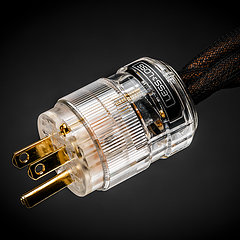 C-MARC™ Prime
The must have foundation for any sound system today.
From
$
486
C-MARC™ Prime
The must have foundation for any sound system today.
From
$
486
-
 C-MARC™ Classic
The unique super-cable power cord everyone's talking about.
From
$
1148
C-MARC™ Classic
The unique super-cable power cord everyone's talking about.
From
$
1148
-
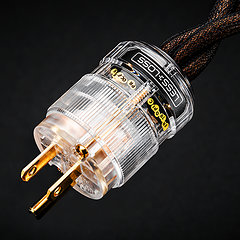 C-MARC™ Classic Entropic Process
The peerless, advanced Classic masterpiece.
From
$
1934
C-MARC™ Classic Entropic Process
The peerless, advanced Classic masterpiece.
From
$
1934
-
 C-MARC™ Stellar Entropic Process
The crown jewel for highest performance power connection.
From
$
2450
C-MARC™ Stellar Entropic Process
The crown jewel for highest performance power connection.
From
$
2450
-
- Loudspeaker Cables
- Interconnect Cables
-
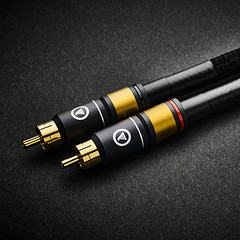 RCA C-MARC™
Cotton-clad true Litz • Whopping 2.3mm2 polarities
From
$
850
RCA C-MARC™
Cotton-clad true Litz • Whopping 2.3mm2 polarities
From
$
850
-
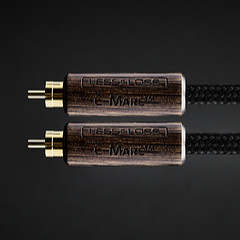 RCA C-MARC™ Entropic Process
Our finest RCA cable • Polished Wenge barrels
From
$
1428
RCA C-MARC™ Entropic Process
Our finest RCA cable • Polished Wenge barrels
From
$
1428
-
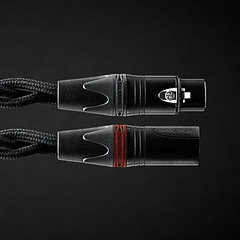 XLR C-MARC™
A hand-braided cotton-clad unique Litz construction
From
$
950
XLR C-MARC™
A hand-braided cotton-clad unique Litz construction
From
$
950
-
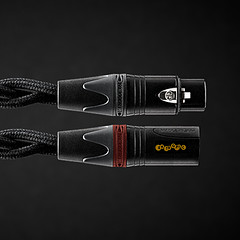 XLR C-MARC™ Entropic Process
Stratospheric performance for the audio connoisseur
From
$
1615
XLR C-MARC™ Entropic Process
Stratospheric performance for the audio connoisseur
From
$
1615
-
- Digital Cables
-
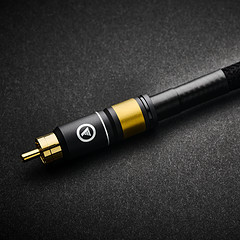 RCA Digital C-MARC™
Cotton-clad unique Litz design • Made only by LessLoss
From
$
510
RCA Digital C-MARC™
Cotton-clad unique Litz design • Made only by LessLoss
From
$
510
-
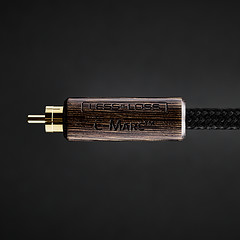 RCA Digital C-MARC™ Entropic Process
Possibly the most subtle digital cable on the planet
From
$
858
RCA Digital C-MARC™ Entropic Process
Possibly the most subtle digital cable on the planet
From
$
858
-
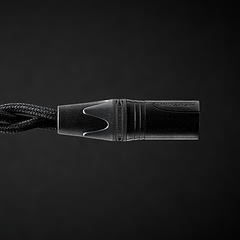 XLR Digital C-MARC™
Featuring a whopping 3 x 2.3mm2 Litz construction
From
$
570
XLR Digital C-MARC™
Featuring a whopping 3 x 2.3mm2 Litz construction
From
$
570
-
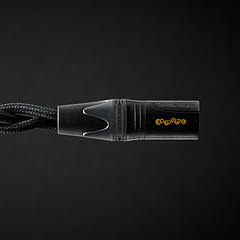 XLR Digital C-MARC™ Entropic Process
Stratospheric performance for the audio connoisseur
From
$
969
XLR Digital C-MARC™ Entropic Process
Stratospheric performance for the audio connoisseur
From
$
969
-
- Grounding Cables
- Bulk Wire and Cable
- Signal Conditioners
-
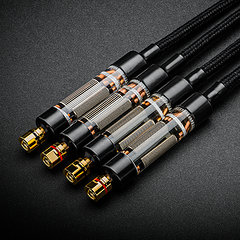 Firewall for Loudspeakers
Firewall for Loudspeakers
C-MARC™ Plug-and-Play Speaker signal conditioning like you've never imagined From $ 1656 -
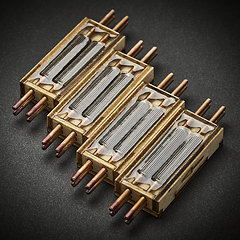 Firewall for Loudspeakers
Firewall for Loudspeakers
DIY version for Self-Installation For the Do-It-Yourself project enthusiast • Solder yourself From $ 800 -
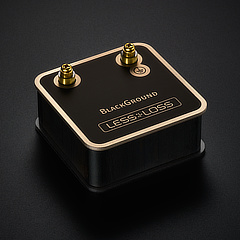 BlackGround DIY
Voltage-ground interface for a variety of applications
From
$
446
BlackGround DIY
Voltage-ground interface for a variety of applications
From
$
446
-
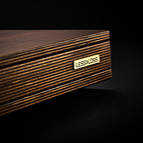 BlackGround 8x/10x Speaker Base
Plug-and-play loudspeaker signal conditioner
From
$
3096
BlackGround 8x/10x Speaker Base
Plug-and-play loudspeaker signal conditioner
From
$
3096
-
- Power Conditioners
-
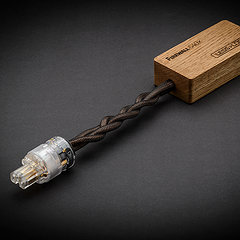 Firewall 640x
Plug-and-play solution for any powered gear
Firewall 640x
Plug-and-play solution for any powered gear
C-MARC™ Entropic Process and standard lead versions From $ 654 -
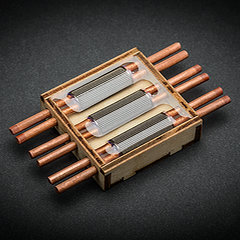 Firewall 640x DIY for Self-Installation
Self-solder and save!
From
$
320
Firewall 640x DIY for Self-Installation
Self-solder and save!
From
$
320
-
 BlackGround DIY
Voltage-ground interface for a variety of applications
From
$
446
BlackGround DIY
Voltage-ground interface for a variety of applications
From
$
446
-
 BlackGround 6x/10x Power Base
Plug-and-play power conditioner
From
$
2350
BlackGround 6x/10x Power Base
Plug-and-play power conditioner
From
$
2350
-
- Power Distributors
- Equipment Feet
- Field Conditioner
- DACs
- Power Cables
- Reviews
- This is definitely the cable to go for. It will almost literally blow your mind. – March 2012, Puresound Magazine
-
I was intrigued by the unanimously positive reviews garnered by these products ...
– by user Raymond Eye
Leaves you speechless
Sensational cables
BEST purchase I've made
Top notch performance
It's a steal
Musical... liquid... 3D
It's not subtle
More than an upgrade
Best I've heard so far
Stellar service
Sounds like a new system
Much more lifelike
Emotional flow
Overwhelming results
More dimensional
Sound is transformative
We were all astounded
Transformed my listening
Sounds so cohesive
Emotionally engaging
- Where to Start
- Free Newsletter
- Newsletter Archive
- B-Stock Alerts
- Shopping Tools
-
Shipping
- Free Shipping Learn about our international shipping policy
-
Return Options
Our satisfaction guarantee
and return policy -
Customs
UPS expedites local
customs clearance
-
Transaction
- Conditions of Sale Agreement for a smooth business transaction
- Privacy Policy We pledge to keep your information private
-
Terms of Use
Business policies
and agreements
-
Account
-
- Contact Us
-
Meet the Designers
-
- Care to share of your personal experience with our products? We'd be happy to post it!
- Want to learn more about our activities? Our Newsletter is both free and spam-free.
hi-res photos, brochures
logos, press releases, and
print-friendly PDF downloads. -
Contact Us
Connect with Us
-

